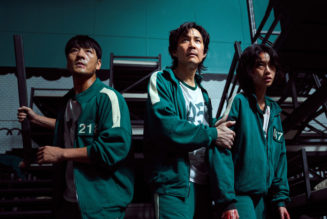Tears of the Kingdom doesn’t quite live up to its predecessor, but it’s still a fantastic new approach to Hyrule.
Share this story
There’s a moment early in The Legend of Zelda: Tears of the Kingdom, in one of the very first shrines, when I felt a shiver of pure thrill run through me. I had been presented with a simple task: get to the other side of a fall-to-your-death deep chasm using the new Ultrahand ability and an assortment of wooden boards, stone hooks, and a single fixed rail. The solution was clear enough, so I used Ultrahand’s ability to essentially super glue anything to anything else and pieced together a square board for Link to stand on and a stone hook to connect to the rail. I then hooked my crude contraption on the rail and climbed aboard. Everything worked exactly how I expected it to, and I was able to cross the chasm easily enough. Yet this simple act of seeing the problem, literally building the plan, and executing the solution felt so satisfying that by the time I had crossed the chasm, I had broken out into a face-swallowing smile.
Though there were many similarly satisfying moments after, I would never smile like that again, and that initial thrill would be slowly replaced with a gentle and familiar pleasantness.
Tears of the Kingdom is the follow-up to the game that defined the Nintendo Switch and reinvigorated the 30-year-old Zelda franchise, Breath of the Wild. The game picks up almost immediately where Breath of the Wild ended. Princess Zelda and her silent protector, Link, are investigating the ruins beneath Hyrule Castle when they stumble upon a slumbering Ganon who is really feeling the effects of neglecting his nighttime skincare routine. Ganon wakes, shaking free the disembodied arm holding him prisoner, and pitches Zelda and Link into darkness. Some undefined time later, Link wakes with a new arm granting him new powers but is tasked with the same old quest: find Zelda.

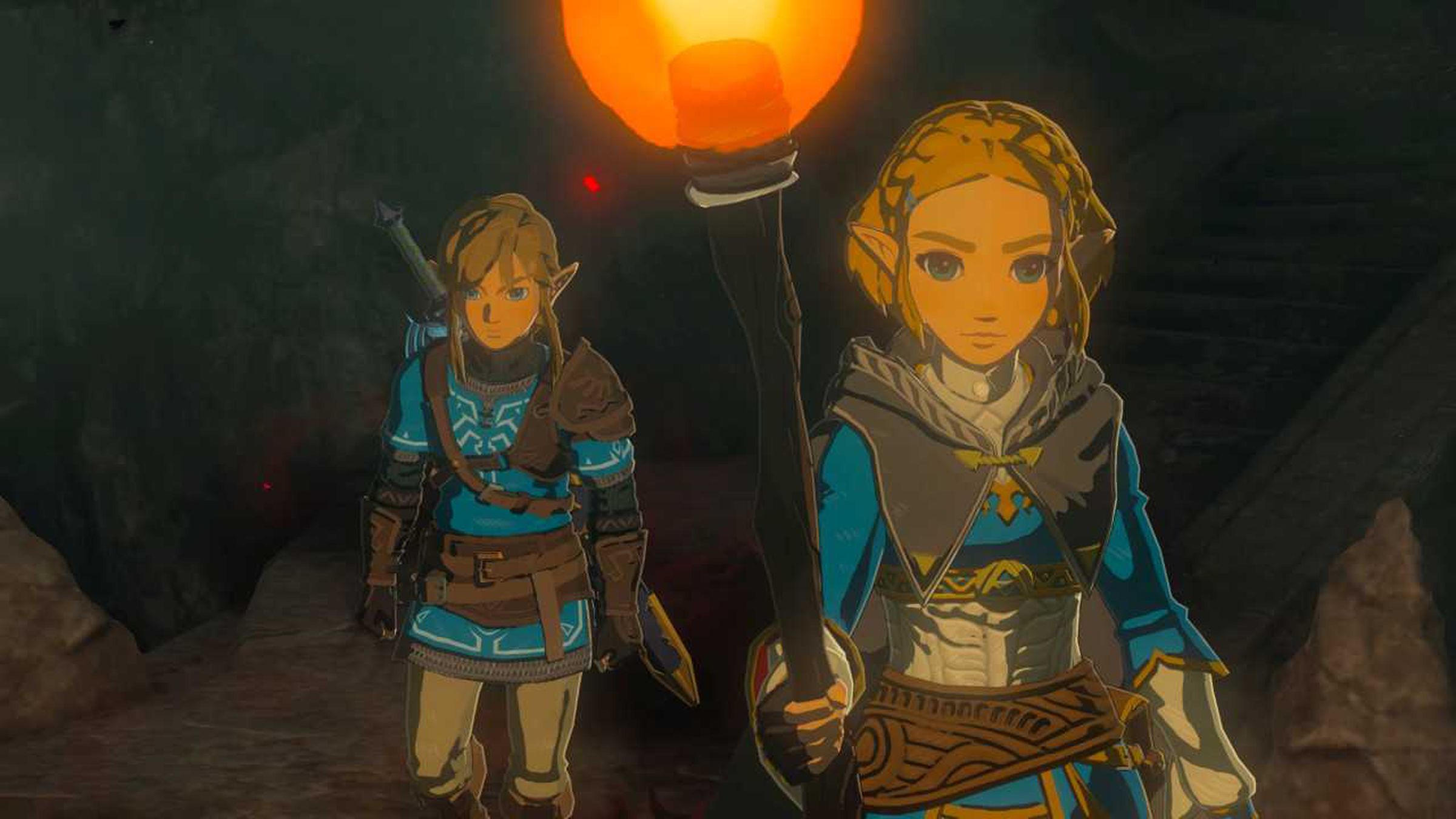
In Tears of the Kingdom, Link has an all-new suite of powers emanating from his new gadget, the totally-not-a-Nintendo-Switch Purah Pad. He can stick things together to create all kinds of items, including weapons, he can rewind time for a specific object, and he can teleport through matter directly above him. Though these are relatively simple powers, taken together, they create infinite possibilities for how Link fights, flies, and puzzle-solves his way through Hyrule and the sky islands above it.
I’m the kind of person that needs structure. It’s why I tend to avoid open-world games. I get paralyzed when I’m given the mandate to do anything, which frequently results in me doing nothing. So I figured I’d rush through Tears the same way I did Breath of the Wild before I eventually abandoned it somewhere around Vah Ruta.
But in Tears, I’ve clocked over 100 hours in two weeks.
And all because Link’s new powers are leagues better — and more interesting — than his old ones. They inspired in me a kind of “F– it, we ball” attitude that set my brain on fire trying to figure out how to get to interesting places on the map or solve a difficult shrine or dungeon puzzle. Hyrule is littered with caches of wooden planks, beams, and wheels and a variety of neon-green machines called Zonai devices to pair with them. The devices range from the practical, like a portable pot to cook on the road, to the martial, like a fire emitter to stick on the end of a sword, to the esoteric, like the stabilizer that I have only used exactly once to great effect.
But the best part is that the game permits you to solve whatever problem, however you like, with whatever materials you can scrounge or carry with you. Tears will explicitly show you, through the materials it liberally scatters about for you to use, that 1 + 1 = 2. But it will equally reward you if, somehow, you come up with 1 + 1 = banana.
Me: Yes, that glider over there with the fans I have here makes the most sense if I wanna get off this sky island. But it’s too slow to walk over there, grab the glider, and assemble everything. Will these fans and the hovering platform I’m standing on work, too? Oh! What if I use a rocket? Will it make me go faster?
Tears of the Kingdom: Yes, and.
As my colleague Andrew Webster put it, “These new powers just give you new ways to do things that only make sense to you.”
And it is glorious.

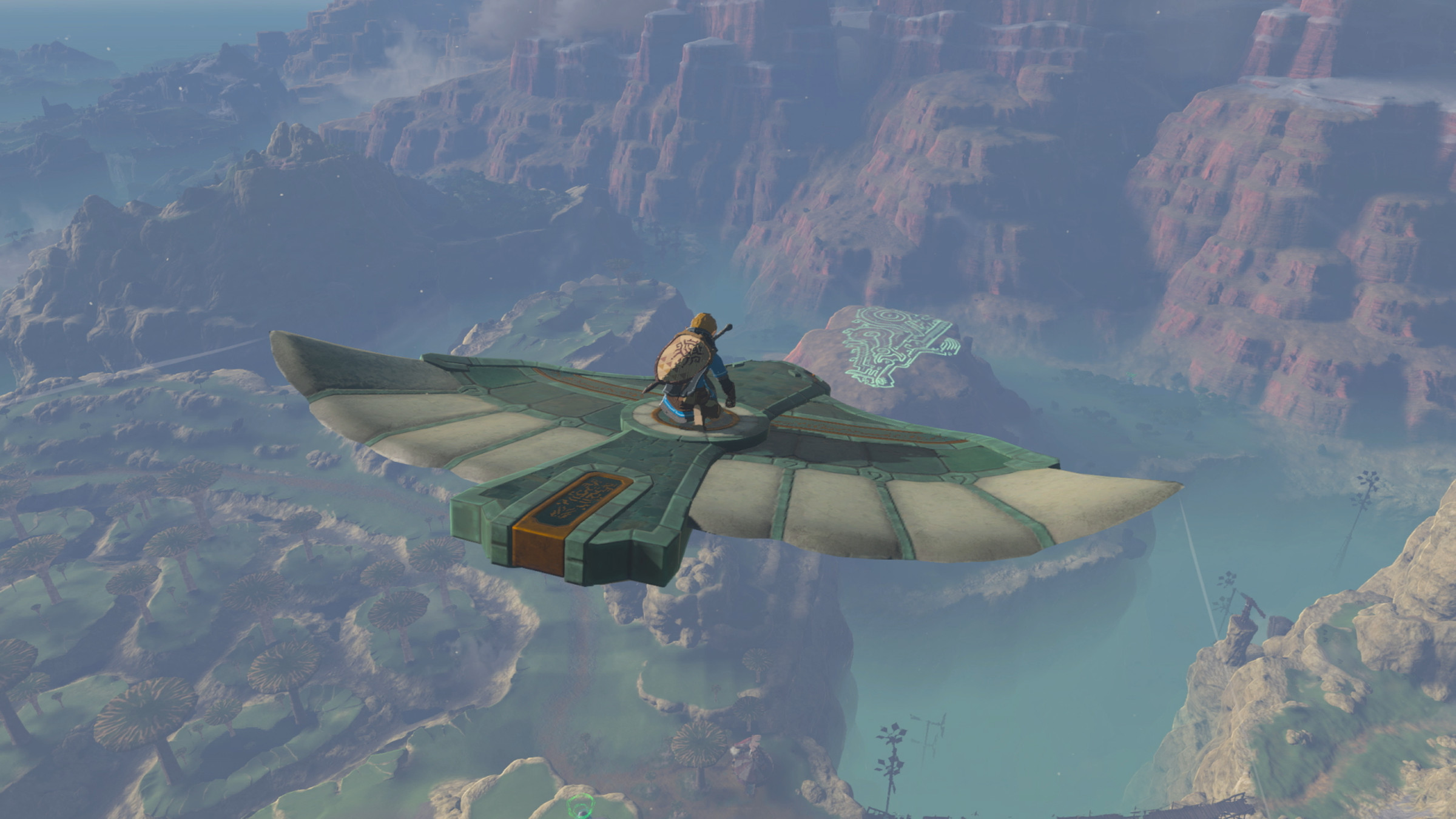
Another lovely element of Tears of the Kingdom is its sheer size. I’ve spent over a hundred hours in this game. I’ve fully upgraded my Purah Pad, completed over 90 shrines, unlocked each Skyview tower on the mainland, and mapped out every point in the sky islands. I’ve met every Great Faerie, completed every labyrinth quest, and have found 50-plus korok seeds. I’ve saved a village from pirates, assisted in uncovering the valuable archeological history of Hyrule, cured a sweet old woman’s sickness with my stellar culinary skills, and fought against deadly misinformation with the power of local journalism. And there are still parts of the game that I have barely touched. I’m not a completionist, especially not with games as big as Tears is. I lack the patience. And I certainly didn’t feel obligated to do all the things I did simply for this review. But Tears compelled me, like stewed oxtail, to strip off the meat, crack open the bone, and suck out the marrow.
Tears’ combat remains pretty much unchanged from Breath of the Wild. Weapon degradation is still a thing, although I do appreciate that there’s an in-game reason now for why everything breaks so easily. I didn’t particularly care for fighting and avoided most encounters when possible — though somewhat contradictory, I really enjoyed fusing weapons. Every enemy drops something you can use to turn into a new weapon. Horns, toenails, and rib cages become the bladed edge for swords or arrows, while dropped enemy clubs, spears, and, in some cases, severed arms function as handles. Like with puzzle solving, Tears lets you get creative with how you craft your arsenal. Or, if that’s not your thing, each component has its own attack power allowing you to simply mash together the two most powerful components. But above all else, I prefer ranged combat. There are so many things you can stick on the end of an arrow to suit your needs while staying relatively safe. A glob of white chu chu jelly will freeze an enemy solid allowing you to get in free melee hits. A juicy steak arrow lures enemies away so you can sneak in and steal goodies from an encampment. And of course, there’s nothing that tastes as great together as bomb + arrow.

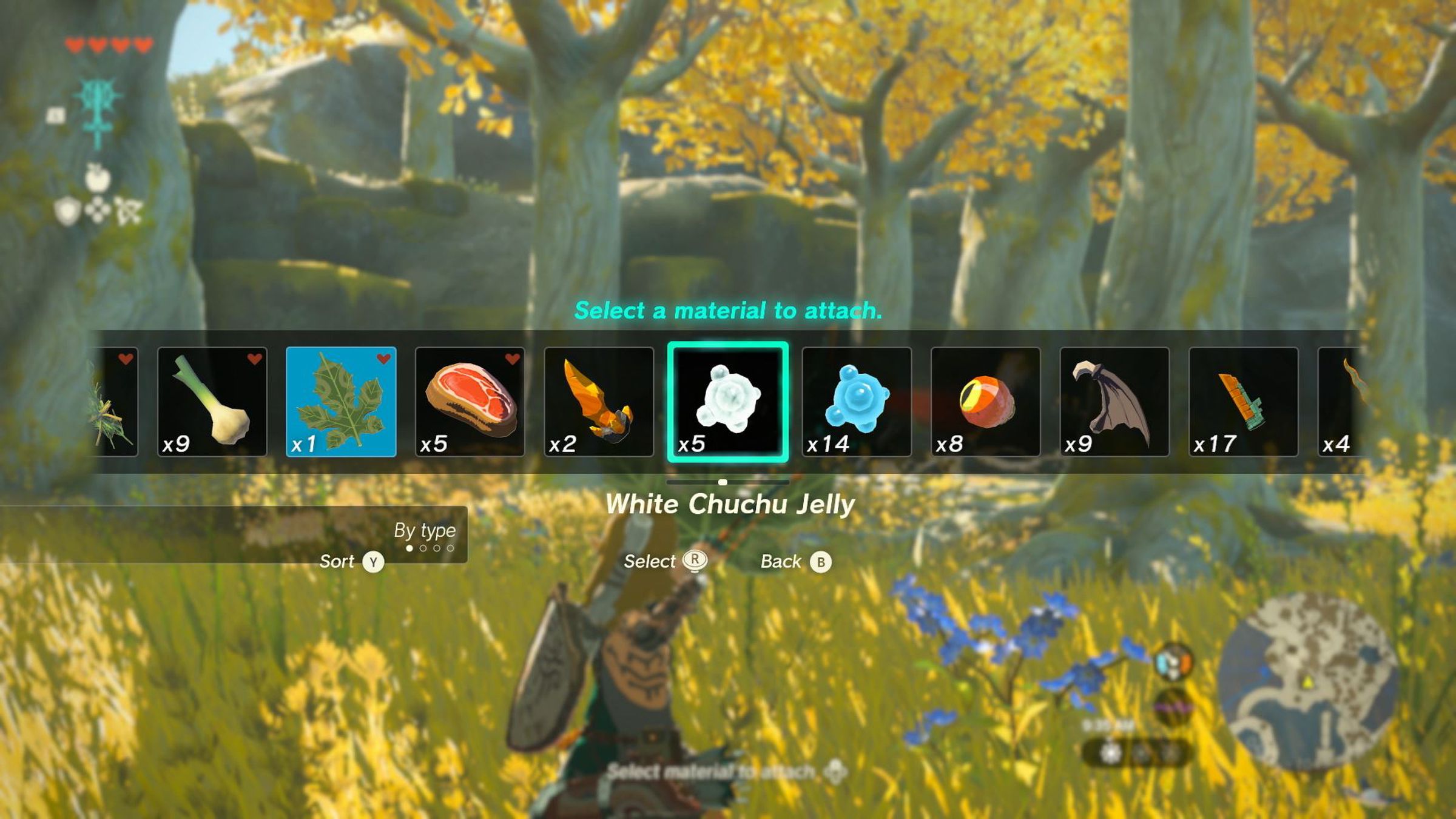
When outlets got their first hands-on taste with Tears’ gameplay, one complaint was how the controls felt too fiddly. My colleague Charles Pulliam-Moore called them “twitchy,” and I agree. There was, at times, a very intricate dance to do the most basic actions, and it was very easy to get it wrong. In a new commercial for the game, a man mutters to himself while playing, talking his way through the action on screen. I related hardcore not because of the obvious resemblance between me and a white, middle-aged Australian but because I, too, had to speak aloud the steps I needed to take so I didn’t mess up. Here are the steps to make a new weapon:
- Equip the handle
- Open the menu
- Select the item you want to fuse
- Drop the item you want to fuse
- Select the Fuse ability from the power wheel
- Then hope you hit the right button so you don’t accidentally fuse the item to your shield
Now try doing all that in the middle of a boss fight.
Controls also get unwieldy for puzzle solving. A lot of shrine and dungeon puzzles rely on tight timing and specific placement. Fortunately, if you make an error, the Recall ability can usually reset you with minimal time loss. But there are moments when you hit the wrong button and end up pitching your prized 60 attack power gibdo club into an abyss when you meant to select the Ultrahand ability. No, I’m not speaking from experience at all.
But messy controls are only a minor gripe. Where Tears really falls short is in its attempt to evoke the same emotions inspired by Breath of the Wild while having nothing particularly emotional to speak of. In Breath of the Wild, when Link broke out of the Shrine of Awakening to see the whole of Hyrule laid out before him, I audibly gasped. That was a special, game-defining moment, and though Tears tried, it could not replicate it. While I had plenty of moments where I was pleased that some ticky-tack, there-is-no-way-this-will-work creation of mine actually did work — there’s nothing I could point to in my many hours of Tears that inspired that same gasp.

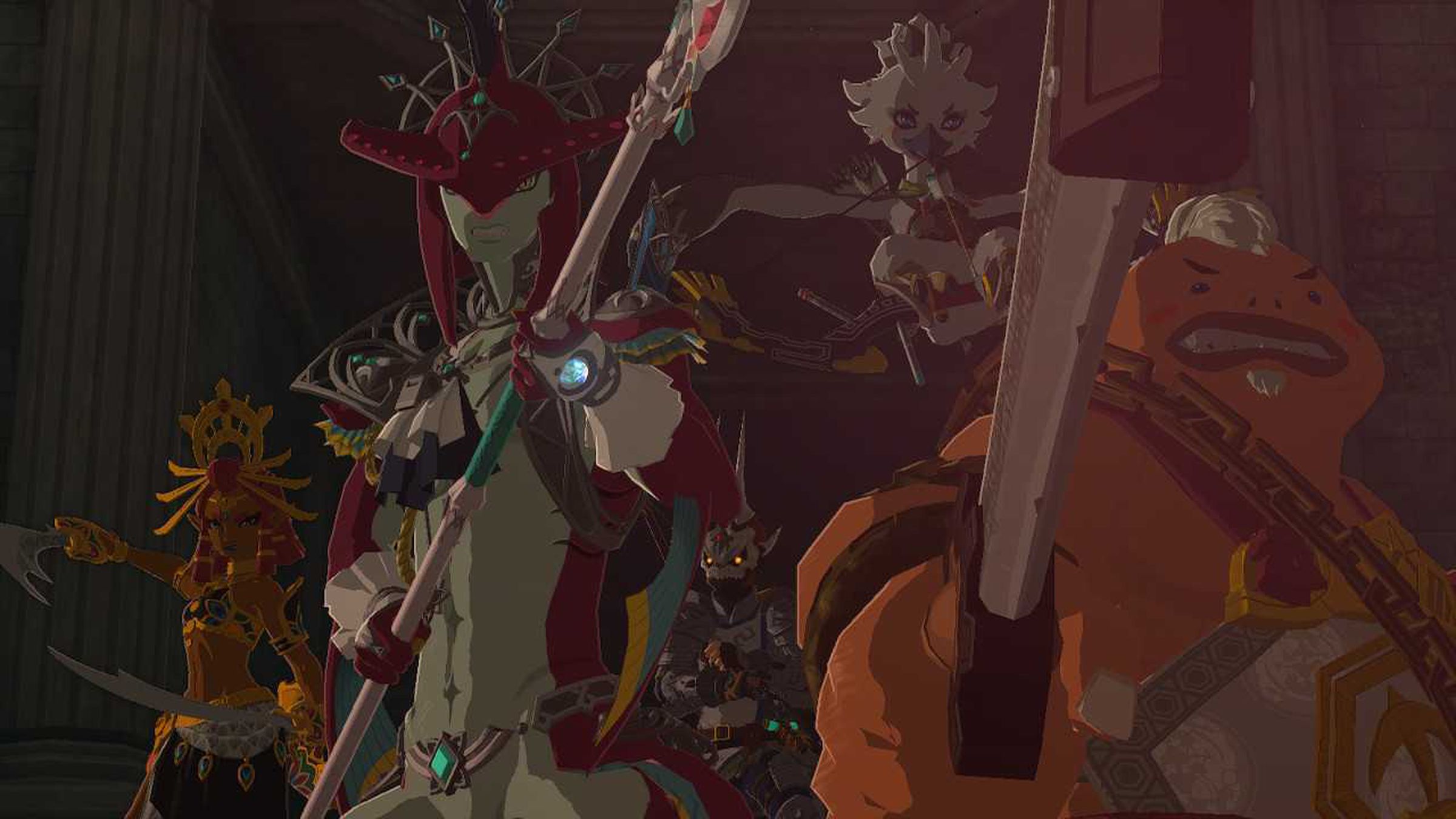
Tears of the Kingdom has plenty of new features that are really well-done and fun to fiddle with, but it doesn’t really do anything truly new. Tears follows the same beats as its predecessor in both gameplay and story. Oop, Ganon’s back. Time to collect your elemental color-coded friends, unlock their powers, obtain the Master Sword, and save the day! It’s still a lonely game that even the addition of your Sage companions, who fight with you but follow you around as silent, dead-eyed ghosts, do not remedy. Zelda, though teased as playing a more active role, has been, once again, utterly sidelined — this time in a particularly egregious way. Your weapon will still break at the least convenient time, but now there’s a complicated waltz of button presses if you need to make a new one. The story cutscene that plays at the end of each dungeon infuriatingly repeats the same moment over and over, only swapping out which Sage gets the closeup. Even the game’s new setting, the sky, doesn’t feel that different or special, just Hyrule with an autumnal palette swap. When Link takes his first skydive, the camera pulls back to show you the whole of the sky and the world below. It’s supposed to mirror that first moment in Breath of the Wild, but instead of inspiring that same wonder, it, at most, elicited a thoughtful hum.
None of these things are bad, nor do they diminish how enjoyable Tears is. It just seems like Nintendo wants you to feel what you felt in 2017 and keeps pointing at moments throughout the game like a friend trying to impress you with something you don’t have the heart to reveal that you’ve seen before.
When the first gameplay showcase for Tears was released, I wrote that the game, because of its sheer depth, was going to ruin lives. I still feel confident in that assessment, so clear your social calendars. But if you’re like me and were hoping for this game to, like Breath of the Wild, inspire a sorely needed feeling of wonder in our increasingly grim world, then the kingdom won’t be the only one shedding tears.
The Legend of Zelda: Tears of the Kingdom launches on the Nintendo Switch on May 12th.






